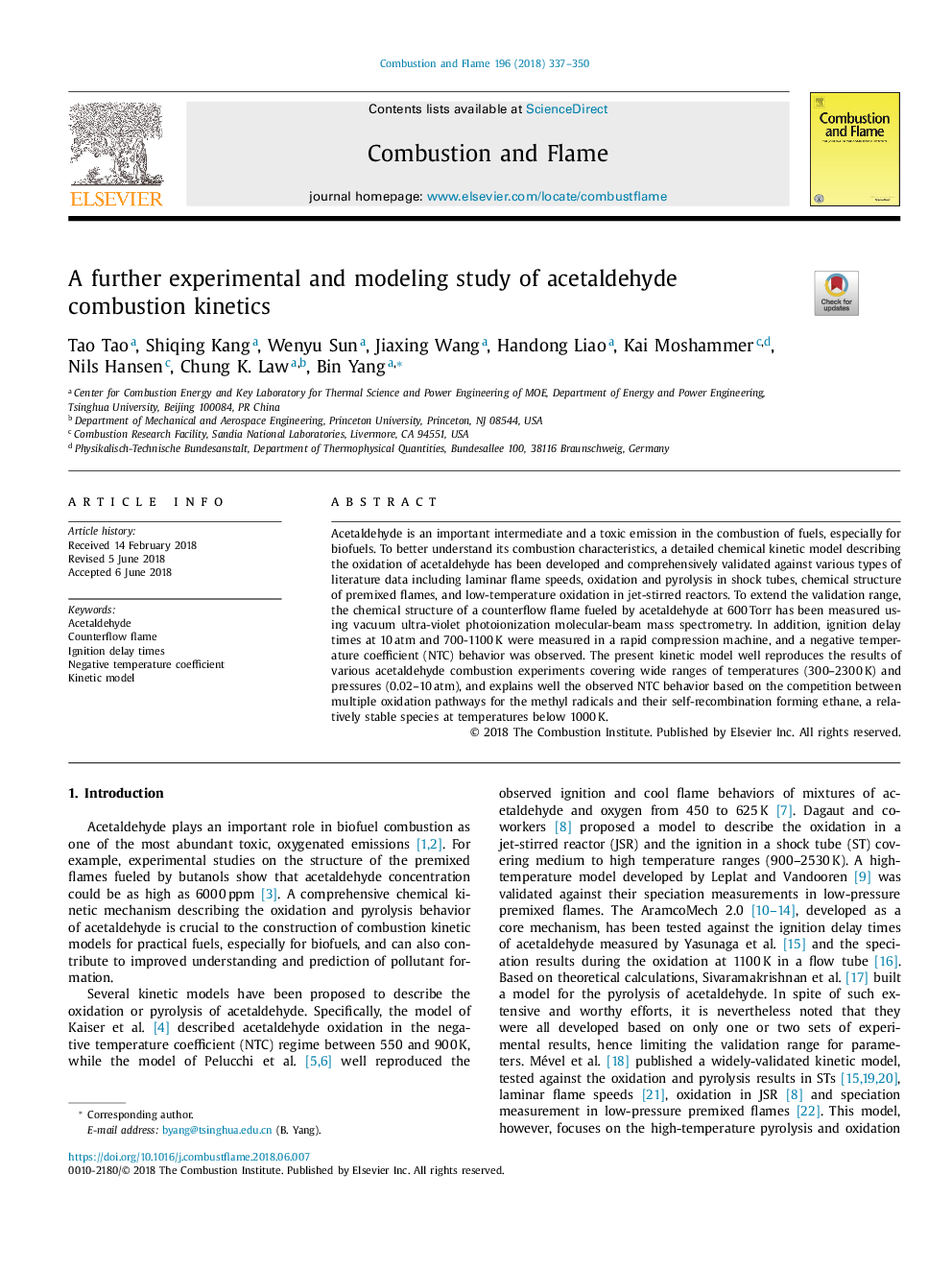| Article ID | Journal | Published Year | Pages | File Type |
|---|---|---|---|---|
| 6593380 | Combustion and Flame | 2018 | 14 Pages |
Abstract
Acetaldehyde is an important intermediate and a toxic emission in the combustion of fuels, especially for biofuels. To better understand its combustion characteristics, a detailed chemical kinetic model describing the oxidation of acetaldehyde has been developed and comprehensively validated against various types of literature data including laminar flame speeds, oxidation and pyrolysis in shock tubes, chemical structure of premixed flames, and low-temperature oxidation in jet-stirred reactors. To extend the validation range, the chemical structure of a counterflow flame fueled by acetaldehyde at 600â¯Torr has been measured using vacuum ultra-violet photoionization molecular-beam mass spectrometry. In addition, ignition delay times at 10â¯atm and 700-1100â¯K were measured in a rapid compression machine, and a negative temperature coefficient (NTC) behavior was observed. The present kinetic model well reproduces the results of various acetaldehyde combustion experiments covering wide ranges of temperatures (300-2300â¯K) and pressures (0.02-10â¯atm), and explains well the observed NTC behavior based on the competition between multiple oxidation pathways for the methyl radicals and their self-recombination forming ethane, a relatively stable species at temperatures below 1000â¯K.
Keywords
Related Topics
Physical Sciences and Engineering
Chemical Engineering
Chemical Engineering (General)
Authors
Tao Tao, Kang Shiqing, Sun Wenyu, Wang Jiaxing, Liao Handong, Kai Moshammer, Nils Hansen, Law Chung K., Yang Bin,
